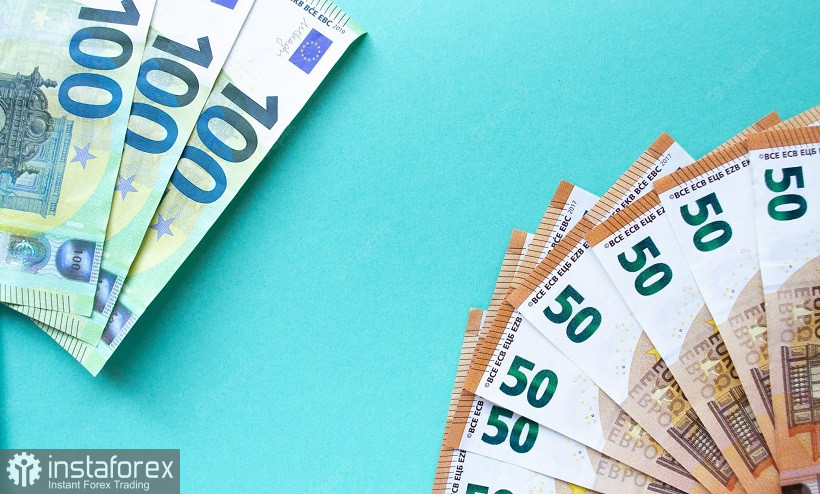The US dollar is actively losing its positions throughout the market amid an almost empty economic calendar. The US dollar index fell from 109.09 to the current value of 106.50 in three trading days. Accordingly, the configuration of the main dollar pairs of the "major group" has also changed, including EUR/USD. The pair has retreated from the parity level by more than 200 points up, gradually developing corrective growth. Moreover, the price is growing not only due to the weakening dollar but also to the strengthening of the euro.

The euro is strengthening in many cross-pairs (in particular, EUR/GBP, EUR/JPY) ahead of the July meeting of the ECB. The greenback, by the way, also fell into a depression on the eve of the July meeting of the Fed members, which will take place next week. The reasons are similar, or rather, mirror image: the euro rises in price on rumors of a "hawkish surprise" from the ECB, and the dollar, respectively, depreciates against the backdrop of comments from some Fed officials who did not support the idea of a 100-point rate hike this month. Thanks to a combination of these fundamental factors, EUR/USD buyers have seized the initiative and are now heading towards the 1.0300 resistance level. At this price point, the middle line of the Bollinger Bands indicator crosses with the Kijun-sen line on the D1 timeframe.
So let's start with the euro. The baseline scenario, which has long been factored into current prices, calls for a 25 basis point hike in the interest rate. This scenario has been voiced repeatedly—just a few days ago, Governing Council member Olli Rehn confirmed such intentions. Earlier, ECB President Christine Lagarde and many heads of Europe's central banks spoke about this. In other words, a 25-point increase in the rate is, one might say, a settled issue. However, after the publication of the latest report on inflation growth in the eurozone, a correspondence discussion arose among experts: according to some analysts, the regulator will not resort to more aggressive monetary policy tightening, while others believe the central bank will still decide to take this step.
Note that the overall consumer price index came out in the "green zone," reflecting a record growth. The June figure jumped to 8.6%, the highest reading on record since 1997. But this release also had a downside: the core index (excluding volatile energy and food prices) unexpectedly slowed its growth year-on-year, reaching 3.7% instead of the planned growth of 3.9%. It is also worth noting that, according to the latest data, German inflation also showed the first signs of a slowdown, reaching 8.2% in June (in May, the CPI peaked at 8.7%).
In other words, the above inflation releases left more questions than answers. Traders, for the most part, lost faith that the ECB could decide to take more aggressive steps. Against this background, the euro began to lose its positions, and even more so when paired with the dollar, which again began to gain momentum.
However, this week the situation has changed, and in a very drastic way. According to Reuters, the 50-point increase at the July meeting of the ECB cannot be ruled out. According to journalists, the European Central Bank will discuss the issue of raising rates by 25 or 50 points. Moreover, according to Reuters insider information, it is now difficult to predict the outcome of this discussion, although earlier, the advantage was definitely in the direction of a 25-point increase.
This side of the story excited market participants: the euro began to be in high demand and not only in tandem with the dollar.
But the US dollar unexpectedly fell into the trap of overestimated market expectations. Rumors that the Fed might decide on a 100-point rate hike provided significant support to the dollar. It was on the wave of these rumors that EUR/USD pair renewed another price low, dropping to 0.9953. But, as it turned out a little later, traders jumped to conclusions. The 100-point rate hike was supported only by the head of the San Francisco Fed, Mary Daly. The rest of her colleagues who have spoken over the past few days were skeptical of the idea (but supported the 75-point increase initiative).
In addition, a report on inflation expectations calculated by the University of Michigan was published last Friday. The data showed that the component of long-term inflation expectations fell to 2.8% (from the previous value of 3.1%). And although this is a secondary macroeconomic report, we can also recall the core PCE index, which has been slowing down in annual terms for the third month in a row. All this suggests that the issue of a 100-point increase is (at least) debatable. And the fact that the Bank of Canada decided to take this step last week does not mean that the Fed will go the same way.
The situation for the pair has developed a stalemate. On the one hand, the dollar is clearly losing its positions, allowing EUR/USD buyers to take new price heights. Plus, the euro suddenly began to strengthen its position on hawkish expectations about possible decisions by the ECB. On the other hand, such price impulses on the eve of key events (in this case, the July meeting of the European Central Bank) are a priori unreliable. Therefore, it is now advisable for the pair to take a wait-and-see position—at least until the price approaches the resistance level of 1.0300 (the middle line of the Bollinger Bands, coinciding with the Kijun-sen line on D1). If the upward impulse starts to fade in this price area, we can consider selling to the levels of 1.0200 and 1.0110 (the Tenkan-sen line on the same timeframe). Longs look too risky anyway.
 Tiếng Việt
Tiếng Việt 
 Русский
Русский English
English Bahasa Indonesia
Bahasa Indonesia Bahasa Malay
Bahasa Malay ไทย
ไทย Español
Español Deutsch
Deutsch Български
Български Français
Français 中文
中文 বাংলা
বাংলা हिन्दी
हिन्दी Čeština
Čeština Українська
Українська Română
Română

